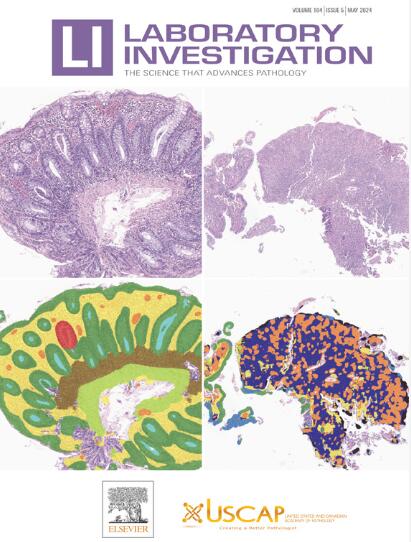Robust Consensus Molecular Subtyping of Muscle-Invasive Bladder Cancer Via 3' RNA Sequencing of Formalin-Fixed Paraffin-Embedded Tissues: Potential Impact for Clinical and Trial Settings
IF 4.2
2区 医学
Q1 MEDICINE, RESEARCH & EXPERIMENTAL
引用次数: 0
Abstract
Transcriptome-based tumor classification has enhanced the molecular characterization of muscle-invasive bladder cancer (MIBC) subtypes. However, the degraded nature of formalin-fixed paraffin-embedded (FFPE) material and the expensive sequencing costs for routine use have limited the use of subtypes in clinical and trial settings. Here, we present an optimized analysis workflow for MIBC molecular subtype prediction from FFPE samples. FFPE material from 240 MIBC samples was sequenced using QuantSeq 3′ mRNA sequencing with unique molecular identifiers (UMIs) and analyzed via a customized RNA-Seq pipeline. The association of consensus subtypes with histology and immunohistochemical expression of core basal/luminal protein markers was assessed. In addition, subtype robustness was explored by simulating scenarios at lower sequencing depths and without UMIs. Five MIBC consensus subtypes were identified in the cohort. The basal/squamous group showed higher expression of KRT14, KRT5, and CD44, and was mainly divergent squamous. Vice versa, luminal, and stroma-rich subtypes had conventional urothelial or urothelial subtype histology, with higher expression of KRT20, FOXA1, and GATA3. The neuroendocrine-like samples had small cell neuroendocrine histology and were negative for luminal/basal markers. Subtype calling from 24 matched fresh-frozen samples analyzed with full-length RNA-Seq showed 87.5% agreement. Furthermore, the subtypes were robust to decreasing sequencing depths and to the absence of UMIs. Taken together, we provide a robust and cost-effective workflow for MIBC consensus molecular subtyping from FFPE-derived RNA. This workflow can be easily implemented as a molecular pathological assay for patient care, clinical trials, and translational research.
通过FFPE组织的3' RNA测序对肌肉浸润性膀胱癌的分子分型达成强有力的共识:对临床和试验环境的潜在影响
基于转录组的肿瘤分类增强了肌肉浸润性膀胱癌(MIBC)亚型的分子特征。然而,福尔马林固定石蜡包埋(FFPE)材料的降解性质以及常规使用的昂贵测序成本限制了亚型在临床和试验环境中的使用。在这里,我们提出了一个优化的分析工作流,用于从FFPE样品中预测MIBC分子亚型。使用QuantSeq 3' mRNA测序(mRNA- seq)对240份MIBC样品中的FFPE材料进行测序,并使用具有独特分子标识符(UMIs)的RNA-Seq管道进行分析。评估共识亚型与核心基础/腔内蛋白标志物的组织学和免疫组织化学表达的关系。此外,通过模拟较低测序深度和没有UMIs的场景来探索亚型鲁棒性。在队列中确定了五种MIBC共识亚型。基底/鳞状组KRT14、KRT5、CD44表达较高,以发散型鳞状为主。反之,管腔型和富基质型具有常规尿路上皮或尿路上皮亚型组织学,KRT20、FOXA1和GATA3表达较高。神经内分泌样标本具有小细胞神经内分泌组织学,腔/基底标记物阴性。全长RNA-Seq分析了24份匹配的新鲜冷冻样品的亚型调用,一致性为87.5%。此外,这些亚型对降低测序深度和缺乏UMIs具有鲁棒性。综上所述,我们为从ffpe衍生的RNA中进行MIBC共识分子分型提供了一个强大且具有成本效益的工作流程。该工作流程可以很容易地实现为患者护理,临床试验和转化研究的分子病理分析。
本文章由计算机程序翻译,如有差异,请以英文原文为准。
求助全文
约1分钟内获得全文
求助全文
来源期刊

Laboratory Investigation
医学-病理学
CiteScore
8.30
自引率
0.00%
发文量
125
审稿时长
2 months
期刊介绍:
Laboratory Investigation is an international journal owned by the United States and Canadian Academy of Pathology. Laboratory Investigation offers prompt publication of high-quality original research in all biomedical disciplines relating to the understanding of human disease and the application of new methods to the diagnosis of disease. Both human and experimental studies are welcome.
 求助内容:
求助内容: 应助结果提醒方式:
应助结果提醒方式:


